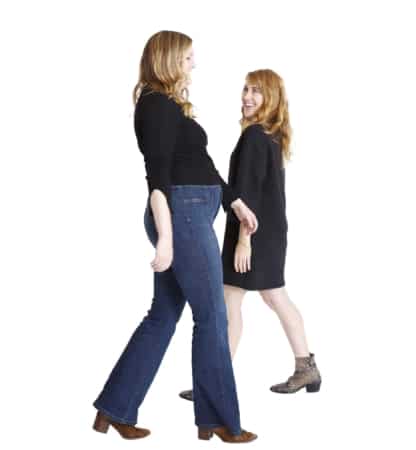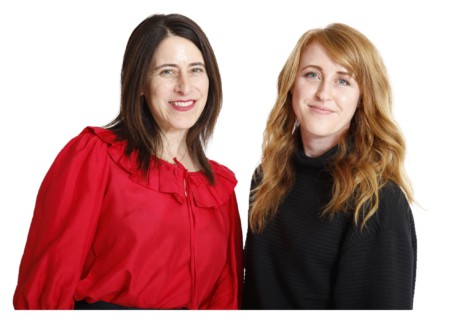08 Mar
Celebrating Women in Design
To mark International Women’s Day, we sat down with our own trendsetting women designers and architects to discuss how they chose design as a career, and how they’ve made their mark.
Q: Let’s just start here: What women inspire you at the moment?
JR: I’ve been so impressed by some of our clients – Amanda Duckworth, partner at Brunswick, Courtney Jones of Jones Hall, and both Kirsten Green, founder and managing partner of Forerunner Ventures and Jennifer Mariska, partner at Forerunner Ventures. All of these women rock the ultimate balance of motherhood and business leadership. Each has her own authentic style of grace and intellect.
DN: Florence Knoll, of course. She was a successful businesswoman, influential to men and women alike in the field, and an out-of-the-box thinker, designer and doer, in a traditional era. She inspires me to be fearless.
KJ: I’ve always found AOC to be incredibly inspiring. She’s a thoughtful, straightforward communicator who’s down to earth and remains true to her values. I also appreciate her transparency, and remembrance of the circumstances she started in.

Q: When and why were you pulled toward this line of work?
JR: I studied interior design in college, and I began my career in the healthcare, higher education, and commercial ground-up fields. Projects would take years – sometimes a decade – to complete. In 2012, my boss was looking to keep me gainfully employed while our work had slowed down due to the recession. She “loaned” me to FENNIE+MEHL because she was old friends with Ned. From the very first week, I loved the fast-paced and creative nature of workplace (and hospitality) design and how Ned and Doug were committed to a deep dive into understanding a client’s business, brand, and culture with direct lines of communication with a client’s leadership. Work is often completed within a year, and we always have multiple projects in process at one time, which keeps everything fresh and creative. I’ve been with FENNIE+MEHL for more than 10 years now and was promoted to partner in 2016. I’m grateful for the serendipitous opportunity to join the studio, and to now lead this amazing team!
DN: Interior Design is a second career for me; my first was as a cartographer (yup!) and graphic designer. I love the stories of places and telling them through design. Interior design and architecture allowed me to fully express that desire out of the two-dimensional box, and in real life.
VK: I watched my dad interact with architects from a young age as he worked with them on the millwork and other timber related components of the design process. As I looked for a direction to take with school, I was interested in both the arts and in the technical side and architecture felt like the perfect fit!
KJ: I watched many an episode of Martha Stewart with my mom when I was younger which definitely ignited a love for interiors, plus my dad and both his brothers all worked in the construction field so I always saw it as a possibility. If you wanted a bookcase for your room, my dad would tell you to “make a drawing—with dimensions!” and he would build it out in the garage. Having that freedom created a feeling that designing + building something was always possible if you just took the time to sit down and think it through. And this mindset still applies! There is no problem on a project that can’t be solved, as long as I can ask the right question to the right person.

Q: What would you like to see change and/or evolve in order to bring more equity to the architecture and construction fields?
JR: Similar to all fields, we need to advocate for and promote more women, and women of color, into the highest positions of leadership. Representation at the decision-making table will always be key to building and sustaining equitable environments. While the interior design industry skews female, the overall AEC industry is historically male, and we still have a lot of work to do to build equitable representation on leadership teams.
KJ: I’d like to see financial transparency – internally within a firm – but mainly salary transparency. One of the most valuable resources I’ve had is a group of former coworkers who’ve shared compensation information with each other that allows me to fairly evaluate my position at firms and understand my market value when interviewing or advocating for myself. Especially as women, we statistically do not negotiate for ourselves in the same way that men do, so knowing what a male peer at a similar level is being paid can be incredibly encouraging when negotiating. Salary transparency is also super valuable for people who might not have the support or background of family or professional mentors to guide them as it levels the playing field and lets them operate off the same information as their peers.
Q: What were your “big bold goals” when you started out in design? How important are those goals to you now and have they changed over time?
DN: I knew in my bones that through the design of space I could help affect people to feel their best. Understanding what is human and what inherently supports our wellbeing is always at the core. This is why I do what I do every day, and this intention hasn’t changed, only solidified over the years.
KJ: Originally, I was very focused on pursuing the intellectual/academic side of the profession, but found through working professionally that I really respect and value the practical side. Academia also has an incredible lack of accessibility and equity, not to mention lack of adequate financial compensation. When I was younger, I also very much bought into the passion for the design/theory/art priority above all else, but perpetuating that mindset devalues our time and labor. Physical and mental health, along with a responsible balance of passion and responsibility, are far more important to a career with longevity.

Q: Are there any pivotal points when you knew a design career was what you wanted to pursue?
JR: My father is a retired fighter pilot, and my mother is a third-generation artist, so I’ve always naturally craved a balance of both the analytical and creative. I started UC Davis as a civil engineering student because I loved math. While I could do the work, after a few months of studying engineering, I knew that it was the absolute wrong track for me. I had over-indexed on the analytical. Feeling depressed as I sat on my bed looking at the next quarter’s engineering classes, my roommate tossed the full catalog of majors and classes to me. Flipping through those pages I learned that UC Davis had a design department, and the rest is history.
VK: That “a-ha!” moment for me was in design school, in the early days, working through the design process and finding solutions. Understanding the way things can be put together and watching them fall into place were my moments of clarity about wanting to pursue design as a career.
Q: Are there any pivotal points in your design career that stand out as unexpectedly synchronistic?
JR: After my serendipitous introduction to FENNIE+MEHL, meeting my husband at a contract consulting gig I had as a Revit specialist for a Sustainable MEP Design firm was certainly pivotal. So glad I picked up that gig!
KJ: The moment I stopped pulling all-nighters in architecture school, I became a much better designer. More time spent is not always better time spent.

